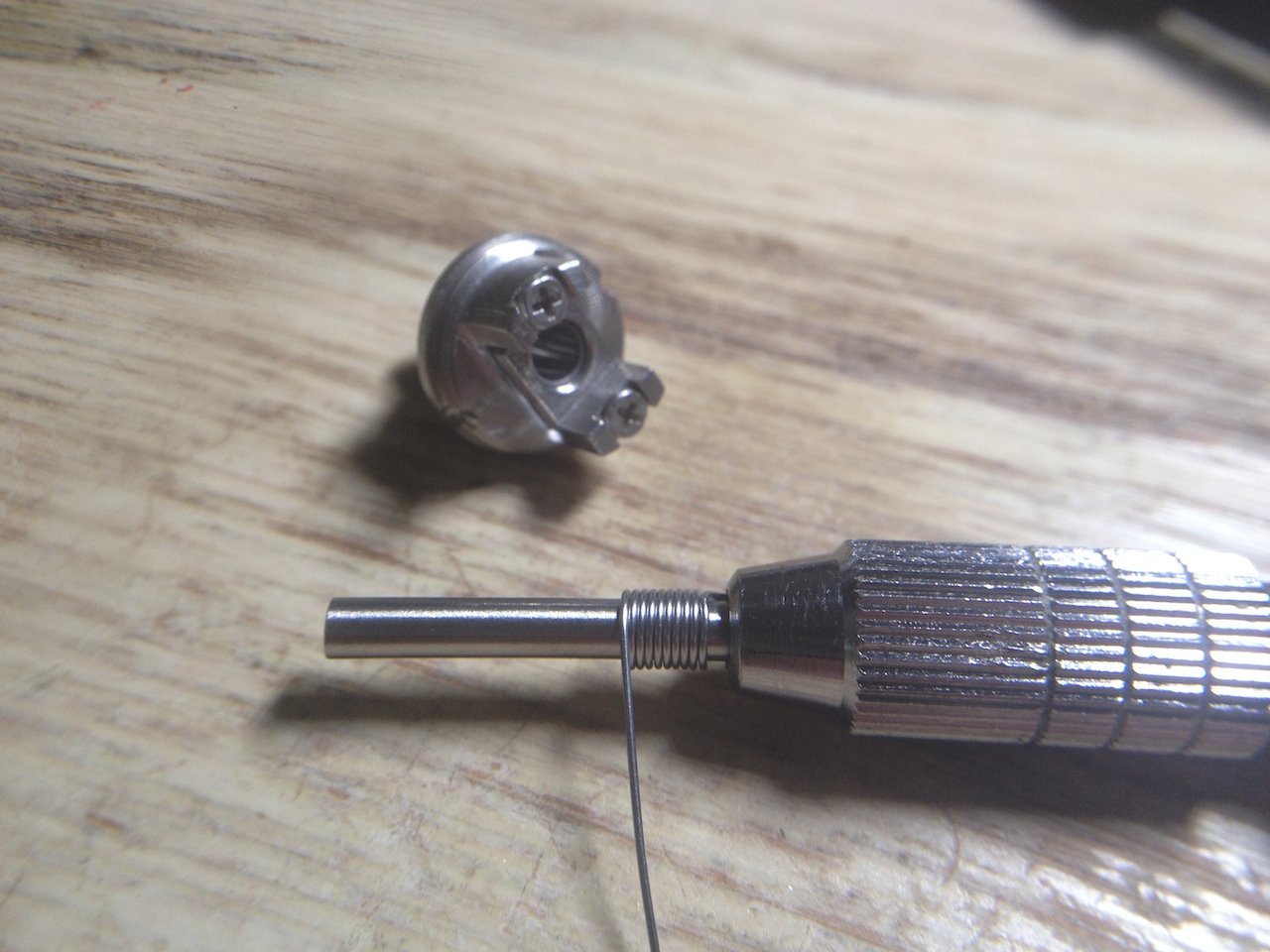Fancy builds are more fun and taste better.
But all of that of course is subjective to the builder and vaper using said fancy coils.
Let me bring up the 3 parallel core Alien coil, because it is all the rage right now.
View attachment 488255
Above coil is a 3x 26g N80 core with a 34g N80 wrap.
As for airflow, it doesn't really matter where it's coming from, as long as it's hitting the coil & cooling it down. When you break down this coil, what exactly is it? It is 3 wires in parallel with a decored Clapton wrapped around them. The above coils at 6 wraps on a 2.5mm bit clocked in just around .25Ω EACH, significantly less ohms than a standard 6 wrap N80 2.5mm single strand coil. The heat and vapor production (when run safely - this applies to every build) is greater than a regular N80 coil. It covers a larger surface area and can hold juice in between the grooves of the wrap & in the grooves of the parallel wires. The amount of wire used increases the surface area, yet because they are parallel, not so much of the wire density. The ramp up time is pretty quick because the 3 cores are parallel to eachother.
Now N80 vs KA1 is a different topic, N80 holds a lower resistance per gauge than KA1 & has a quicker ramp time. It also is a softer metal, making it easier to manipulate and bend, but also easier to mess up with higher gauges. You also have your 316 Stainless Steel wire & SS wire blends. Rugged Wires for example is a super stiff stainless steel blend wire that carries a resistance of about half of KA1 per gauge & heats up super quickly.
@plewm - if you want to find out if there are advantages (to you, again this is all subjective to the vaper) to Claptons vs single strand coils, message me and I can give you a pair to try out





